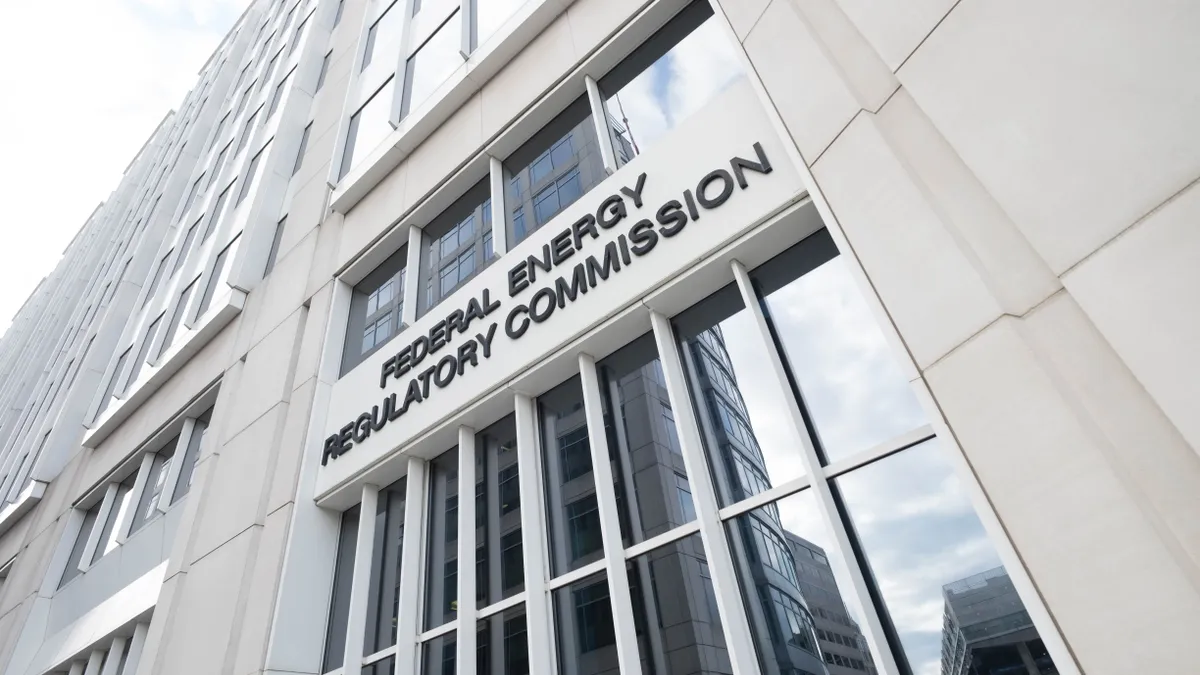Dive Brief:
-
The Federal Energy Regulatory Commission is working with the White House, Department of Energy and the National Security Council to identify power plants that are critical to the grid, FERC Chief of Staff Anthony Pugliese told a nuclear conference this week, according to E&E News.
-
Identifying those plants is the first step in a White House plan to save uneconomic coal and nuclear plants from retirement detailed in a leaked NSC memo this spring. FERC in response said that it is only providing technical assistance to the other agencies, and that Pugliese was "simply stating that the federal government is working to ensure that important critical infrastructure, like hospitals, remains operational."
-
Pugliese also said FERC is working with federal lawmakers to potentially expand its permitting authority over interstate pipelines, according to audio of the meeting provided to the outlet. The chief of staff reportedly said expanded authority may be needed to combat states like New York that "have no desire to put infrastructure in the ground, regardless of what it is."
Dive Insight:
Pugliese's reported comments at the American Nuclear Society this week shed new light on FERC's role in the Trump administration's push to save coal and nuclear plants.
In June, President Trump directed the DOE to devise a plan to keep the uneconomic generators online, saying their retirement could put national security at risk. The order came the same day as the release of the NSC memo, which argued the large plants are more secure than those fueled by natural gas.
Pugliese picked up that argument at the conference, E&E reports, saying that "adversarial countries" see natural gas pipelines as an "area of great opportunity." Nuclear assets, by contrast, are "essentially impervious to [electromagnetic pulses] and cyberattacks."
Energy security experts question that framing, saying that all energy infrastructure have threat vulnerabilities. An old nuclear plant may not be hacked, but could have service disrupted by attacks on its cooling system or the transmission lines that connect it to the grid.
FERC on Thursday moved to walk back the chief of staff's statements, saying it is not involved in crafting a potential coal and nuclear bailout
"In response to a question after the speech, the Chief of Staff was simply stating that the federal government is working to ensure that important critical infrastructure, like hospitals, remains operational," FERC said in a statement. "FERC is an independent agency and therefore has not assisted in the development of policy but provides technical assistance as subject matter experts."
Trump's directive to save coal and nuclear plants came months after FERC unanimously rejected a DOE plan to keep the generators online in January, opening a broader investigation into grid resilience.
DOE has yet to respond to Trump's order, but Pugliese said FERC's resilience proceeding is searching for ways to keep the generators online as well, saying it is "critically important" that they "do not go the way of the dodo bird."
That line reflects an oft-used argument from coal and nuclear generators that their assets could completely disappear from wholesale electricity markets if market rules are not changed. Coal and nuclear operator FirstEnergy used it in comments on the ill-fated DOE bailout plan, and Pugliese's boss, FERC Chairman Kevin McIntyre, repeated it in a Congressional hearing last year.
The sentiment is not reflected, however, in reliability assessments from regional grid operators, who say the grid remains reliable and that many coal and nuclear plants across the country will be online for years to come.
In addition to his coal and nuclear comments, Pugliese also said FERC is working with lawmakers in the House and Senate to expand FERC's ability to overrule state decisions to halt energy infrastructure projects like pipelines. FERC this week overruled a New York decision to deny water permits to a proposed pipeline, allowing it to be built, but said it lacked the legal authority to do the same for another project proposed in the state.
This post has been updated to include comment from the Federal Energy Regulatory Commission.













